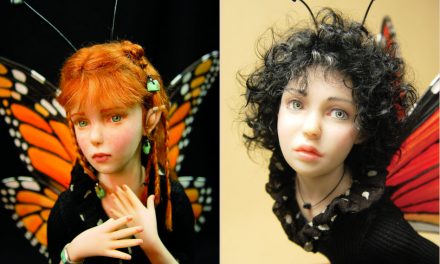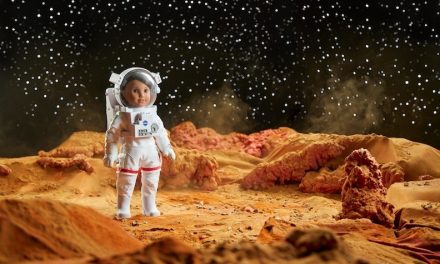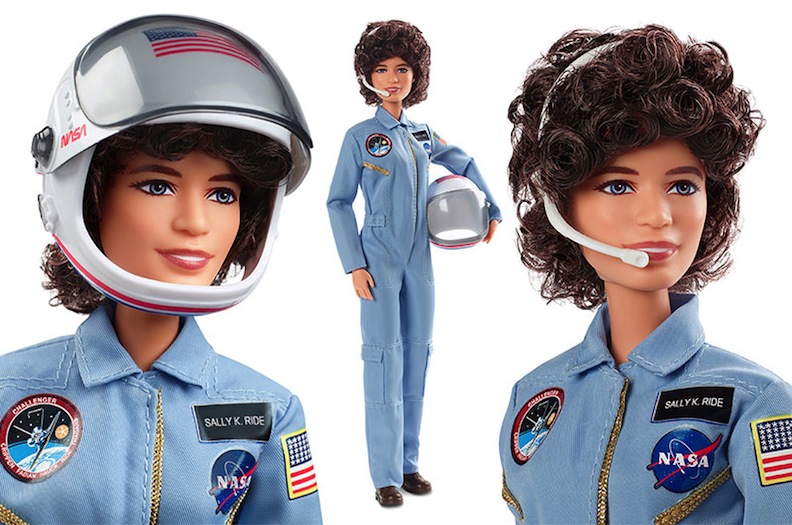
The Sally Ride doll from Mattel mirrors the astronaut’s flight suit, helmet, and head set.
When most college and graduate students seek employment, they choose tutoring, campus opportunities, or an apprenticeship in their major’s field. For PhD candidate Sally Ride, she turned to her college’s newspaper and answered a classified ad. From a simple announcement in the Stanford University paper, Ride made history. This year, Mattel honors Ride’s legacy with the Sally Ride doll.

A true hero for the ages: the Sally Ride doll embodies the smart, confident go-getter.
Part of its Inspiring Women Series, the Sally Ride doll commemorates the real-life brilliant and courageous woman. At age 32, she became the first U.S. female in space, and remains the youngest American to do so. Prior to Ride’s ascent, Russia’s cosmonauts, Valentina Tereshkova and Svetlana Savitskaya, were the first two women in orbit.
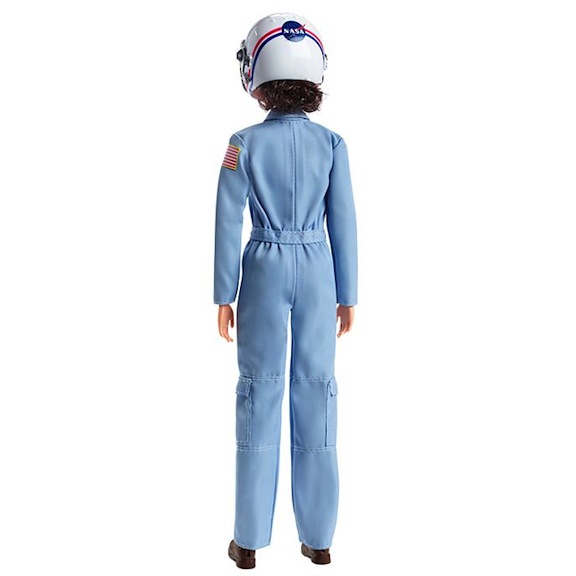
The back of the NASA flight suit, modeled by the Sally Ride doll
Ride had always had a soft spot for the sciences. She was a gifted athlete who could have pursued a competitive tennis career. Instead, she opted to follow her research and academic leanings. During her undergraduate years, she attended Swarthmore and UCLA. She completed her studies at Stanford University, and earned a master’s degree and PhD from that institution.
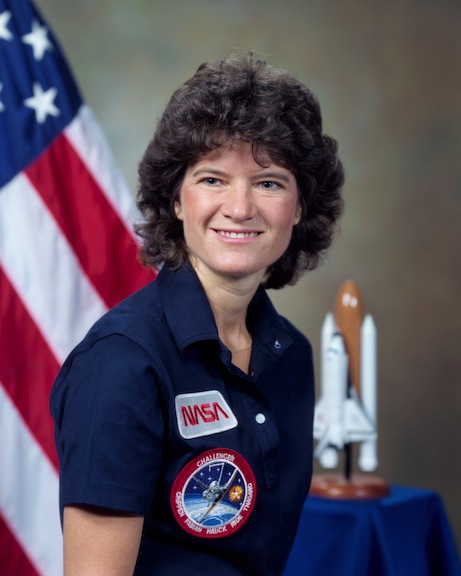
An official NASA portrait of Sally Ride, the real-life astronaut pioneer
In 1978, while doing research on X-rays and how they interact in an interstellar medium, Ride spotted that fateful ad. She applied and was one of only 35 people selected out of 8,000 applicants. The Sally Ride doll pays homage to an inspirational woman who didn’t let her gender box her in.

Sally Ride doll with head set
At the time of her acceptance into the NASA program, Ride was among the first women ever permitted into the astronaut class. In 1979, she was certified as a mission specialist who was trained in ground-based capsule communication. She also worked to develop the Space Shuttle’s robotic arm. Unlike other STEM dolls — Barbie, American Girl, Lottie — the Sally Ride doll is based in reality.
Her hard work and determination led to Ride’s inclusion in the Space Shuttle Challenger’s flight of 1983. Part of the STS-7 mission, Ride became an object of media scrutiny and hypothesizing. It’s difficult to believe the level of insensitive questions that reporters hurled at her. They asked, “Do you weep when things go wrong?” and “Are you worried that the flight will affect your reproductive organs?” The Sally Ride doll should come with additional faces, expressions that show disdain and embarrassment. If she hadn’t been one before, Sally became a feminist after these uncomfortable encounters.
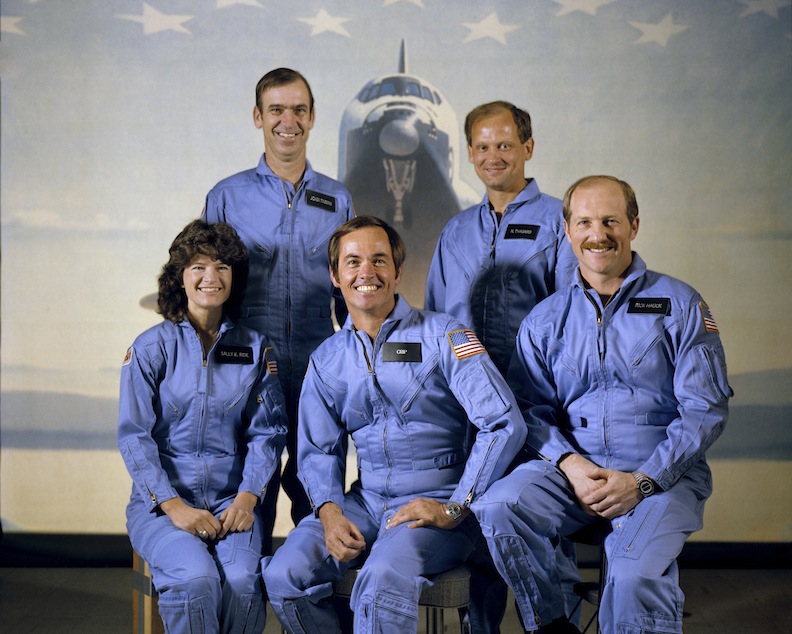
The times were changing, and Sally Ride helped to change them. Shown here with the STS7 crew, where her gender was a preoccupation with the press.
Fortunately for the press, Ride had a good sense of humor and was patient with their inane and at-times idiotic concerns. She recognized her inclusion as a giant leap for womankind. “Young girls need to see role models in whatever careers they may choose. You can’t be what you can’t see,” she wisely said. Those prescient words are the perfect launch pad for the Sally Ride doll.
Priced at $30.99, the Sally Ride doll wears her NASA-licensed flight suit. She comes with a head set, removable helmet, boots, doll stand, and certificate of authenticity. Her collectible box resembles a space shuttle, and it features a brief bio of her life and times on the back.
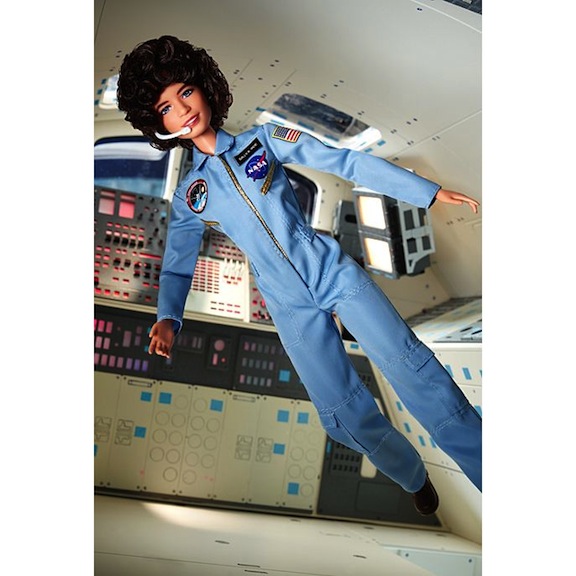
Mattel poses the Sally Ride doll in her famous weightless pose.
After Ride’s first venture into space aboard the Challenger, she continued working with the Space Shuttle’s team. Her second trip was in 1984; and at that point, she had logged more than 340 hours in space. While training for her third flight aboard Challenger, the Space Shuttle disaster occurred. The shuttle blew up on January 28, 1986, while attempting its tenth mission. It broke apart 73 seconds into its flight, killing all seven crewmembers. This is the tragic flight that claimed the life of the first civilian in space, schoolteacher Christa McAuliffe.
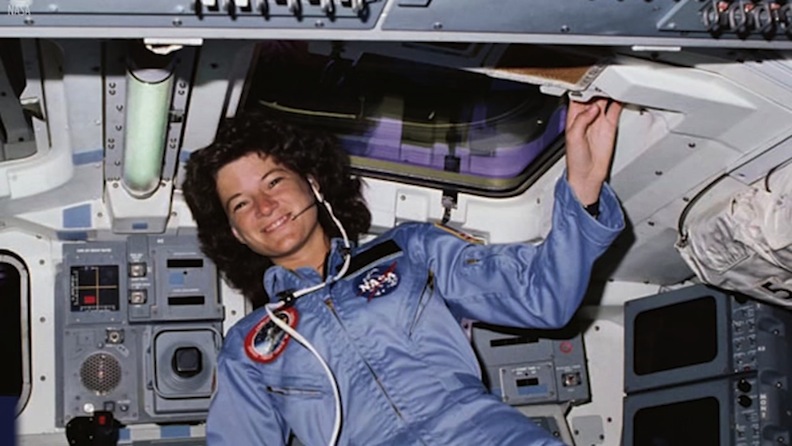
The actual Sally Ride in space! Fans would greet her with lyrics from “Mustang Sally,” urging her to “ride, Sally, ride”!
In the aftermath, President Ronald Reagan formed the Rogers Commission to investigate what had occurred. Sally Ride was one of the professionals chosen to lead the forensic examination and reconstruction of what went wrong. In fact, when the Columbia fatal accident occurred, in 2003, Ride participated in that investigation as well. She has the sad distinction of being the only person who worked alongside two separate commissions trying to reconstruct these horrific events. After exhaustive research and trial-and-error, Sally Ride was the committee member who solved the reason for the explosions. She uncovered that the O-rings became stiff at low temperatures and that was at the explosions’ root causes.
In 1987, Ride left her full-time role at NASA and became a physics professor at University of California, San Diego. That same year, she divorced her husband, fellow astronaut Steven Hawley. She became a vocal advocate for STEM courses directed at women, and authored several books aimed at children. She knew that the up-and-coming generation of women could be “astronauts,” not “female astronauts.”
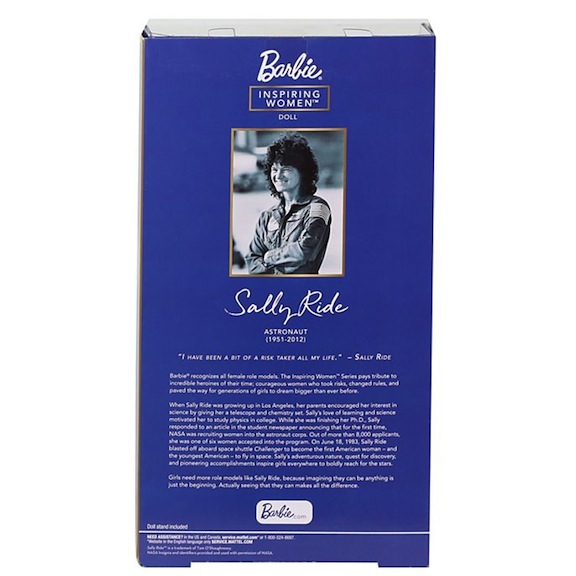
The inspiring story of Sally ride is found on the Mattel box.
Wanting to ensure that her path stopped being “extraordinary,” Ride founded the Sally Ride Science company. As the CEO, Ride oversaw the creation of science-based curriculum for middle and elementary schools. The academic lesson plans were for everyone, but some lesson plans did have a focus on women. She wanted other young women to follow in her trail. “For whatever reason, I didn’t succumb to the stereotype that science wasn’t for girls. I got encouragement from my parents,” Ride stated. “I never ran into a teacher or a counselor who told me that science was for boys. A lot of my friends did. I wanted to make sure that didn’t happen again.”
The Sally Ride doll commemorates the woman who left the earth too soon. She died in 2012 from pancreatic cancer at age 61. After her death, her partner, Tam O’Shaughnessy, came forward about their relationship. A science writer, O’Shaughnessy was Ride’s writing collaborator and her life partner. They had met in their college years as competitive tennis players and reconnected right before Ride’s divorce.

Known for her levelheaded behavior and insightful nature, Sally Ride was tapped to lead the Rogers Commission and the other disaster investigations.
The world learned of Ride’s sexuality via her obituary. Just as she had shared her diagnosis with only a handful of friends, she was mum about whom she loved. Her partner O’Shaughnessy observed, “Sally didn’t want to be defined by the lesbian/gay label. She didn’t want to be defined by a gender label. We both didn’t like categories. Neither one of us didn’t want to be defined by our sexuality.”
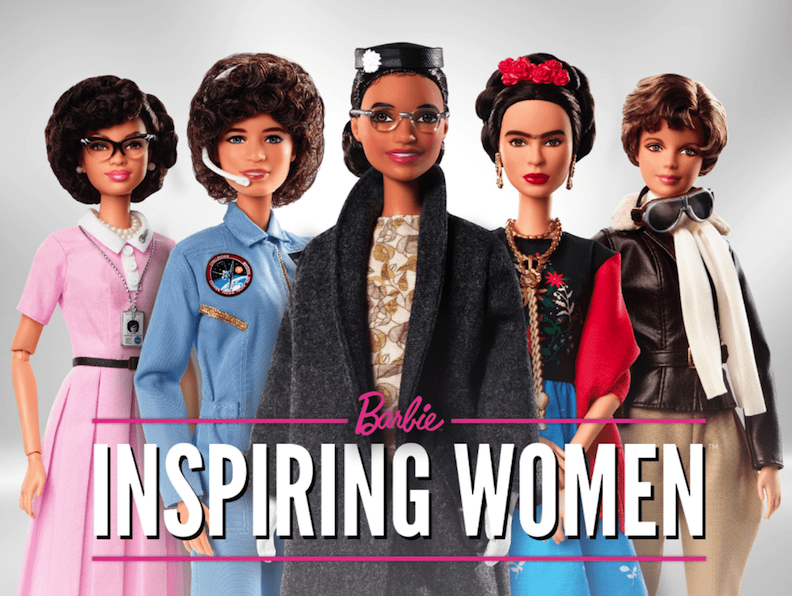
The Inspiring Women Series has saluted women who are trailblazers in art, math, aviation, science, and civil rights.
In 2019, seven years after her death, Sally Ride is still influencing science fans, space fanatics, and dreamers around the globe. The Sally Ride doll is available on the Mattel site, as well as on sites for “space geeks.” It is ready for purchase at big-box stores and other retailers.
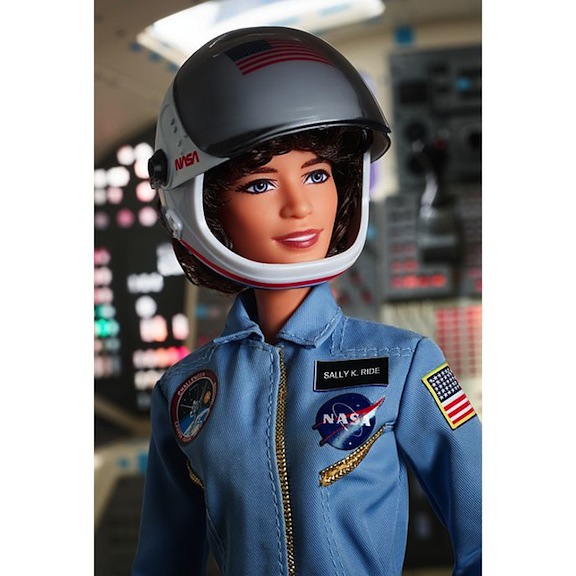
“Science is fun. Science is curiosity. We all have natural curiosity,” Sally Ride wrote. “It’s posing questions and coming up with a method. It’s delving in.”
Barbie artist Carlyle Nuera has captured Ride’s youth and vitality. The Mattel designer is responsible for the “Wrinkle in Time” dolls that saluted Mindy Kaling, Oprah Winfrey, and Reese Witherspoon. Nuera’s skills are biographically accurate and quite lovely. The Sally Ride doll embodies her devotion to charting new terrain and overcoming low expectations.
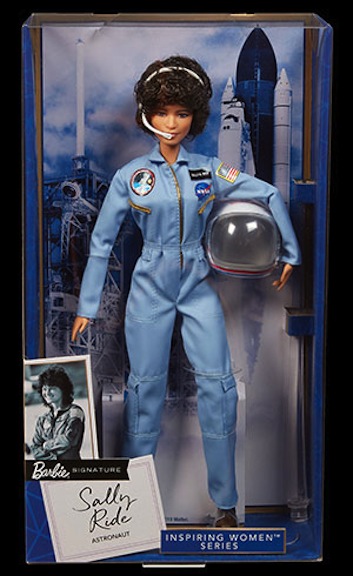
“I think it’s important for little girls growing up, and young women, to have one in every walk of life. So, from that point of view, I am proud to be a role model,” Sally Ride stated in a speech.
“I would like to be remembered as someone who was not afraid to do what she wanted to do,” Ride wrote about her NASA endeavors. “I want to be remembered as someone who took risks along the way in order to achieve her goals. Remember, all adventures, especially into new territory, are scary.” The Sally Ride doll celebrates an American astronaut who was brave, smart, and just happened to be a woman.

